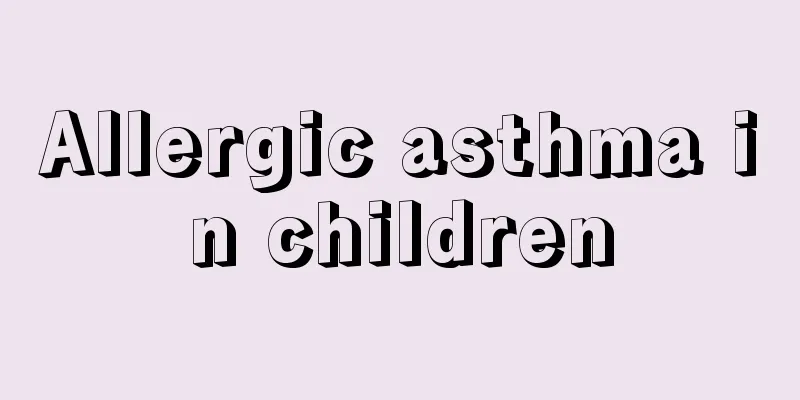Why do babies like to be held upright?

|
Newborn babies cannot be held randomly, mainly because the baby's neck is not fully developed at this time, and you need to support the baby's neck when holding it. As children grow slowly, even if their necks have developed and become strong, there is an obvious phenomenon that most babies prefer to be held vertically and are not very willing to be held horizontally. So, why do babies like to be held upright? Let’s take a look at the reasons below.
Of course it is better to hold the baby upright. The baby starts from half-lying in the belly and slowly moves up to being held upright after birth. This is a process of his cognition of the world. But holding the baby upright does not mean that he has to stand. His legs should not be put under stress. His buttocks and waist should be held. Some babies' cervical vertebrae are not very strong, so you should support his head with one hand. This is also very important. Babies held upright are usually smarter and cuter than those lying down. 1. Hand support method: Use your left hand to support the baby's back, neck, and head, and your right hand to support his little butt and waist. This method is often used to pick up and put down the baby from the bed. 2. Wrist holding method: Place the baby's head in the crook of your left arm, protect the baby's head with your elbow, protect the back and waist with your left wrist and left hand, extend your right forearm over the baby to protect the baby's legs, and support the baby's buttocks and waist with your right hand. This method is a more commonly used posture. 3. Don’t hold your baby vertically: a newborn’s head accounts for 1/4 of its total length. When holding the baby upright, the weight of the baby's head is entirely on the cervical spine. When the baby is 1-2 months old, the neck muscles are not fully developed and are weak. This incorrect holding posture should be used to prevent damage to the baby's spine. These injuries are not easy to detect at the time, but may affect the child's future growth and development. Therefore, it is not advisable to hold the baby in a straight vertical position. 4. Don’t hold the child for too long: People’s love for their children has reached an unparalleled level. They don’t kiss or love their children enough, so they start holding the child just a few days after the child is born. Little do people know that this practice violates the natural laws of infant growth and development and is harmful rather than beneficial to the child.(1) Newborn babies need 20 hours of sleep a day; babies around 6 months old need about 16 hours of sleep. Therefore, except for special circumstances such as feeding and changing diapers, do not hold the baby too much. (2) Due to physiological characteristics, the stomach and cardia muscles of infants are relatively relaxed, but the pyloric muscles are very tight. In this case, if the infant is held in the arms and played with after breastfeeding or feeding, food can easily overflow from the cardia and cause vomiting. (3) Babies’ bones grow very quickly. If they are held in the arms for a long time, it will be extremely detrimental to the normal growth of their bones. It is necessary to take your baby out to bask in the sun from time to time to enhance his immunity, but the time should not be too long. 5. Mother-child communication style: When holding the baby in this way, the mother and baby are face to face, which is most conducive to communication and dialogue between parents and children. The mother can also gently swing the baby in front of her to make the baby more relaxed and happier.
The characteristics of infant growth and development are a large and heavy head, more gelatin in the bones, underdeveloped muscles, and weak muscle strength. Therefore, a one-month-old baby can only lift his head slightly for a moment, and the head can begin to stand upright at three months. Because the neck and back muscles are not yet fully developed, babies aged 1 to 3 months cannot support the weight of their heads for a long time. Therefore, the posture for holding a baby of 1 to 3 months is very particular, and the key is to support the baby's head. For babies aged 1 to 2 months, it is mainly best to hold them flat, but they can also be held diagonally at a smaller angle. When holding the baby flat, let the baby lie flat in the adult's arms; when holding the baby diagonally, let the child lie diagonally in the adult's arms. Whether the baby is held flat or at an angle, the adult's forearm should support the baby's head. The other arm supports the baby's hips and waist. For babies who are prone to spitting up, they should be held at an angle. This can prevent spitting up or reduce the degree of spitting up. Three-month-old babies are mainly held in an oblique or upright position. When holding the child obliquely, the angle at which the child tilts upward can be slightly larger. There are two postures to choose from when holding a child upright. One upright holding position is that the baby sits on one of the adult's forearms with his back facing the adult, and the adult's other hand holds the baby's chest so that the baby's head and back are against the adult's chest; another upright holding position is that the baby sits on one of the adult's forearms with his face facing the adult, and the adult's other hand supports the baby's head, neck and back so that the baby's chest is close to the adult's chest and shoulders. |
<<: Is it better for babies to talk early or late?
>>: Do children need to be given injections if they bite someone?
Recommend
What is the cause of the child's abdominal effusion?
The health of children is a matter that concerns ...
What should we pay attention to when children have psychomotor retardation?
The health of children requires comprehensive att...
Can infant meningitis be cured?
Meningitis is a common brain disease. Patients wi...
The reason why babies hiccup before one month old
I believe that everyone must be very familiar wit...
How to use medicine for pneumonia in children
We know that children's physical health is an...
How to treat chronic tonsillitis in children?
Many children suffer from tonsillitis because of ...
My baby farts very smelly but doesn’t poop. What’s going on?
The digestive function of babies is not yet sound...
What to eat for children with impaired vision
Not only is the social pressure high, but childre...
How to give baby eye drops
Because the baby's retina is not fully develo...
These symptoms should be excluded during autism infancy
Many parents think that symptoms of autism can on...
What are the treatments for ADHD in children?
Attention Deficit Hyperactivity Disorder (ADHD) i...
Why does my baby suddenly have a dry cough?
It is a very common phenomenon for babies to coug...
My child has a fever, but his head is hot but his body is not. What's going on?
Children's body functions are not fully devel...
What should I do if my child is short in height?
As we all know, a child's weight and height a...
What are the symptoms of baby pink eye?
In fact, babies are very susceptible to conjuncti...









